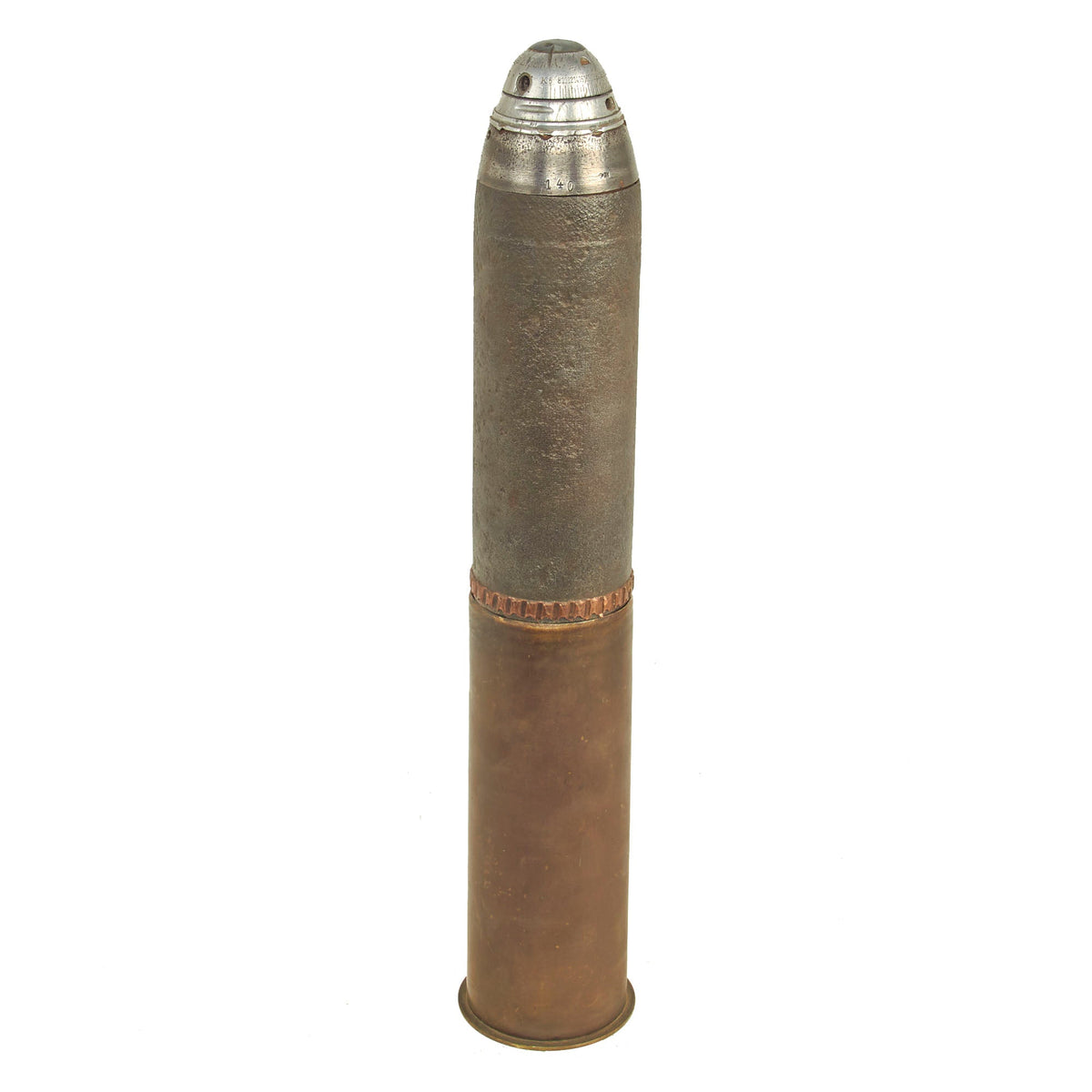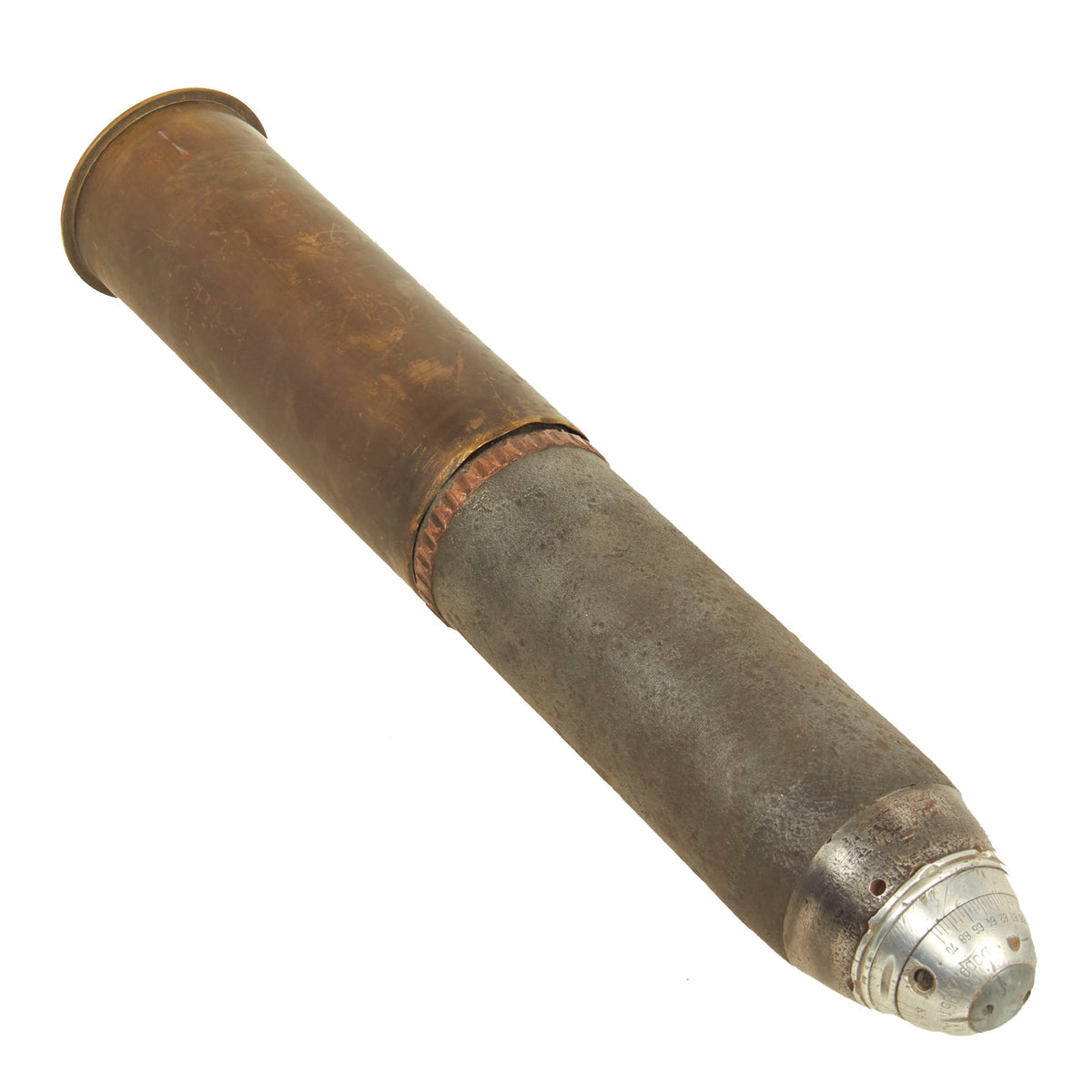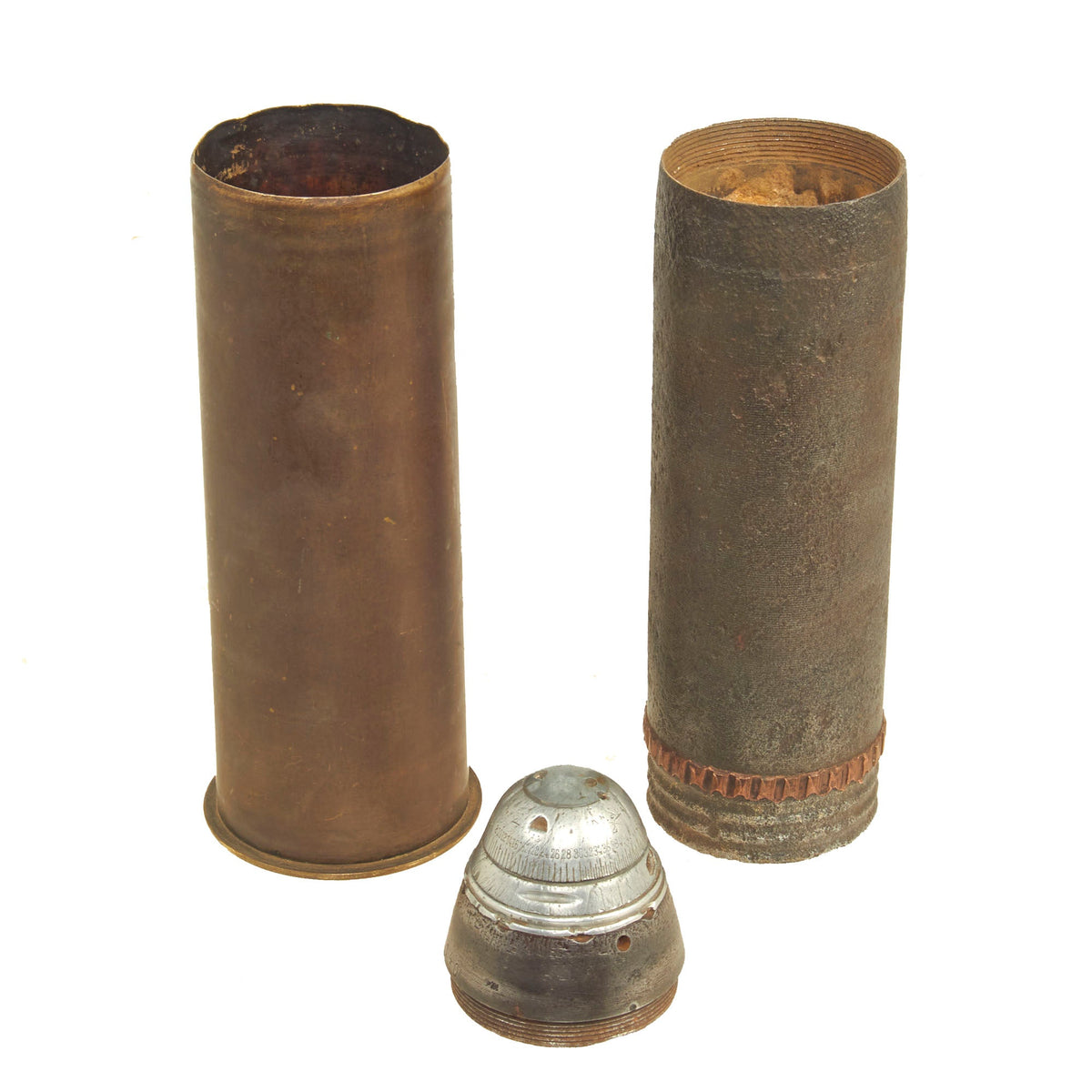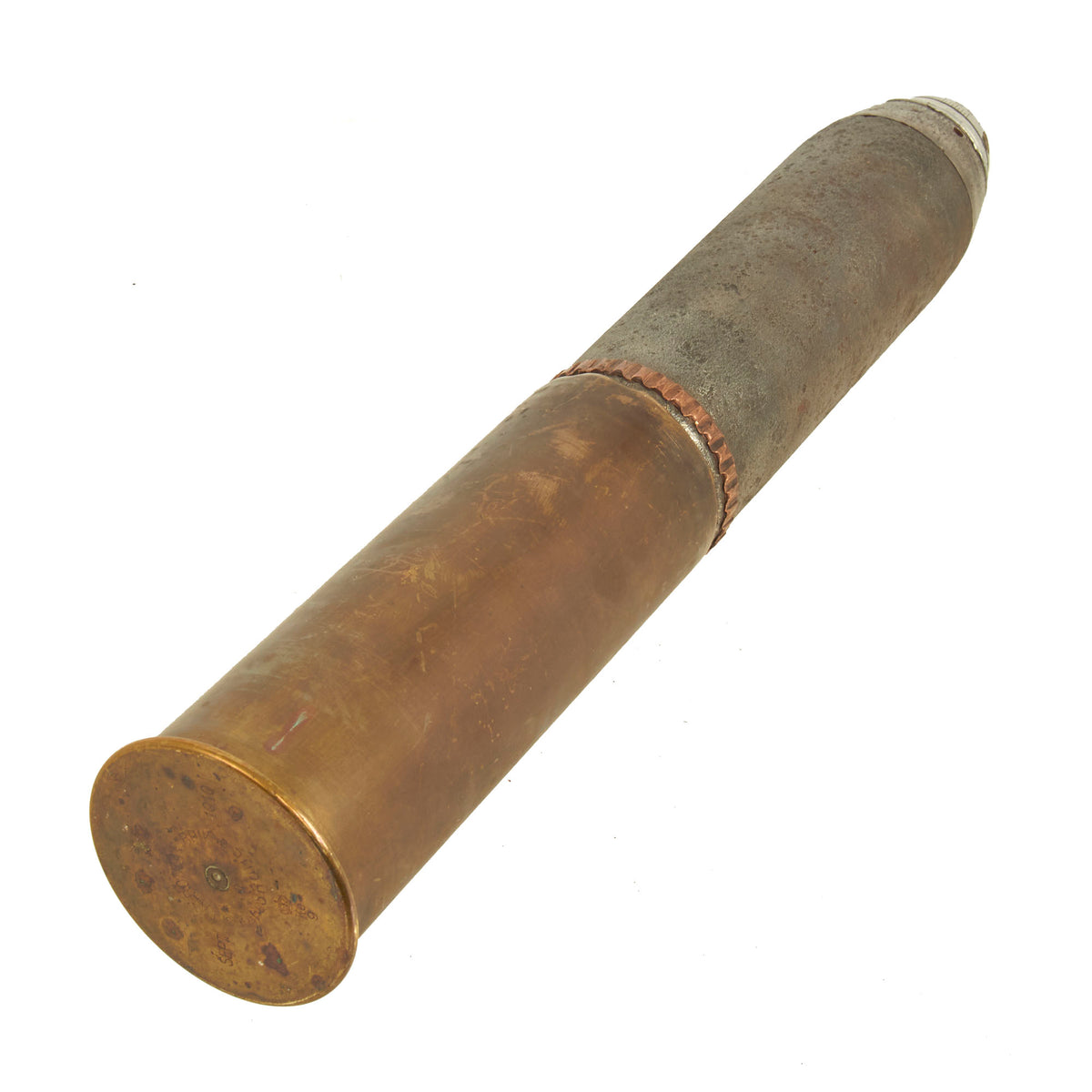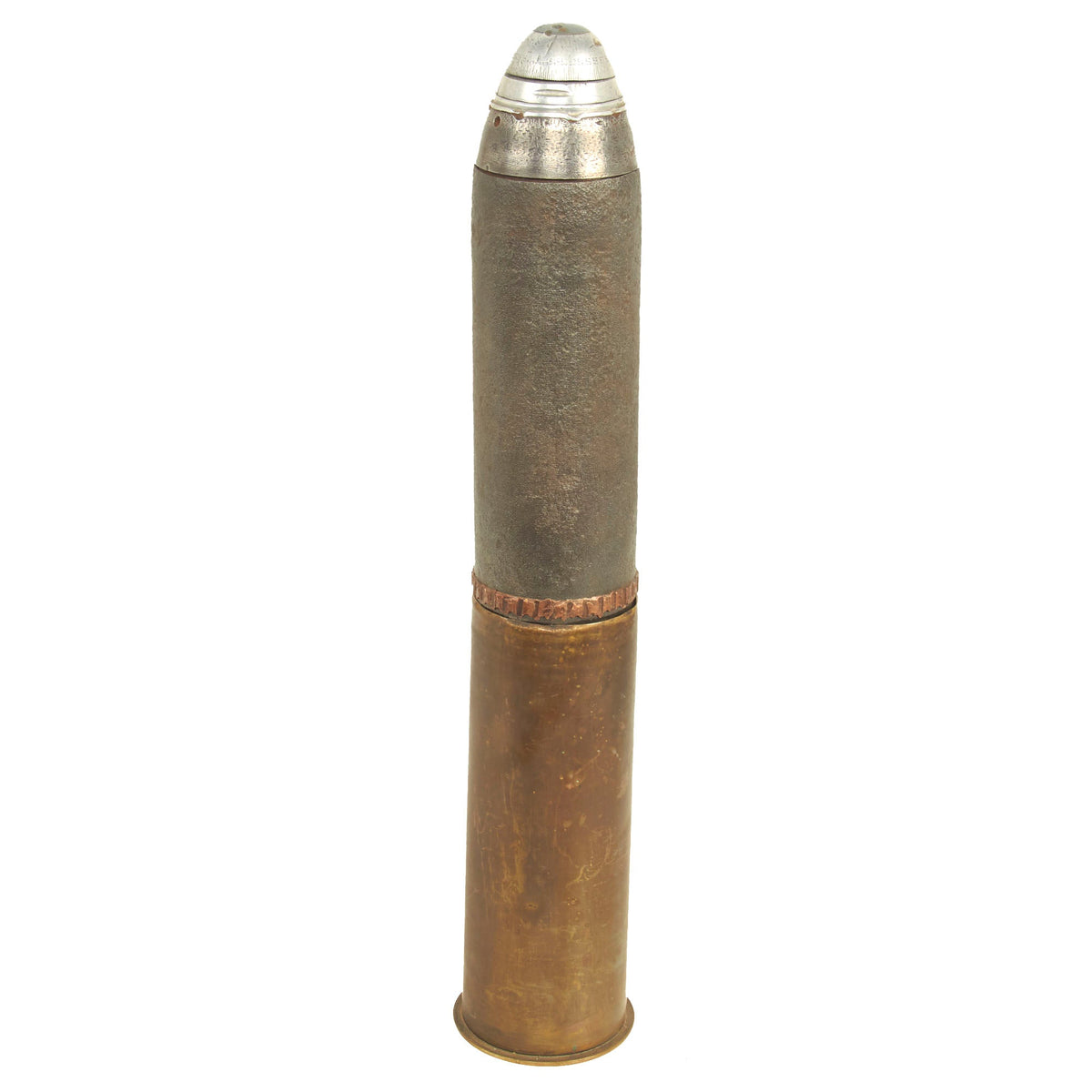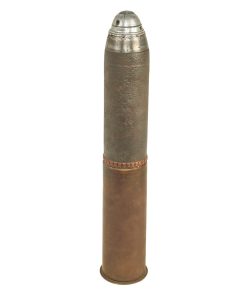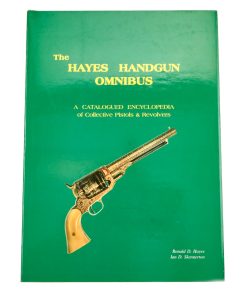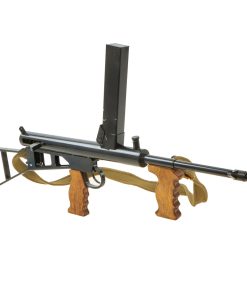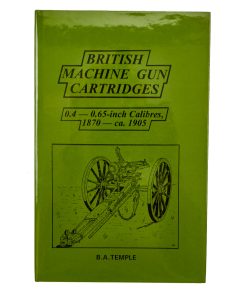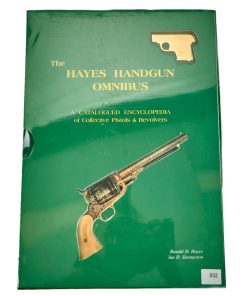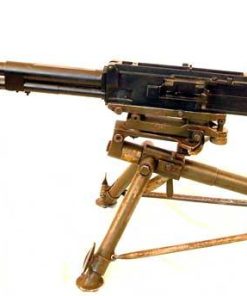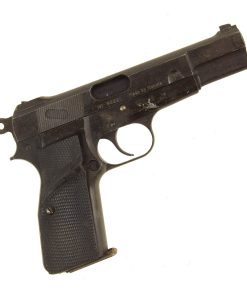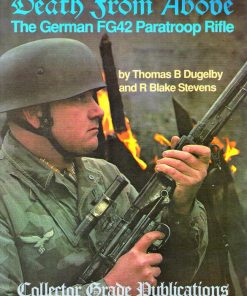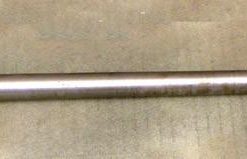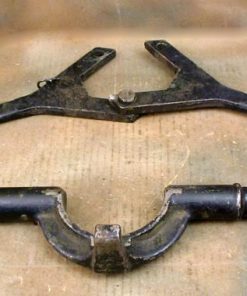Original German WWI Imperial German 7.7 cm FK 96 n.A. Inert Artillery Round With Fuse – Dated 1910 Original Items
$ 595,00 $ 178,50
Original Item: Only One Available. This is a wonderful example of an excavated Imperial German 7.7cm Artillery Round as used with the 7.7 cm Feldkanone 96 neuer Art field gun. This artillery round is completely void of any explosive content and has a deactivated fuse. It cannot be used as a destructive device and is in total compliance with the current BATF standards governing inert ordnance.
Not Available For Export.
The gun combined the barrel of the earlier 7.7 cm FK 96 with a recoil system, a new breech and a new carriage. Existing FK 96s were upgraded over time. The FK 96 n.A. was shorter-ranged, but lighter than the French Canon de 75 modèle 1897 or the British Ordnance QF 18 pounder gun; the Germans placed a premium on mobility, which served them well during the early stages of World War I. However, once the front had become static, the greater rate of fire of the French gun and the heavier shells fired by the British gun put the Germans at a disadvantage. The Germans remedied this by developing the longer-ranged, but heavier 7.7 cm FK 16.
As with most guns of its era, the FK 96 n.A. had seats for two crewmen mounted on its splinter shield. Guns taken into service by Finland, Poland, Lithuania, Estonia and Latvia upon independence in 1919 served until replaced during the 1930s.
The round does appear to have been excavated and was matched with a 1910 dated shell casing. The projectile measures approximately 11 inches tall with the shell casing standing at 9 inches tall. There are faint visible markings present on the projectile and the headstamp is clear on the casing with a very visible 1910 date. Weight approximately 10 pounds.
Fast Shipping with Professional Packaging
Thanks to our longstanding association with UPS FedEx DHL, and other major international carriers, we are able to provide a range of shipping options. Our warehouse staff is expertly trained and will wrap your products according to our exact and precise specifications. Prior to shipping, your goods will be thoroughly examined and securely secured. We ship to thousands clients each day across multiple countries. This shows how we're dedicated to be the largest retailer on the internet. Warehouses and distribution centres can be located throughout Europe as well as the USA.
Note: Orders with more than one item will be assigned a processing date depending on the item.
Before shipping before shipping, we'll conduct a thorough inspection of the items you have ordered. Today, the majority of orders will be delivered within 48 hours. The delivery time will be between 3-7 days.
Returns
The stock is dynamic and we cannot completely manage it because multiple stakeholders are involved, including our factory and warehouse. So the actual stock may alter at any time. It's possible that you may not receive your order once the order has been made.
Our policy is valid for a period of 30 days. If you don't receive the product within 30 days, we are not able to issue a refund or an exchange.
You can only return an item if it is unused and in the same state as the day you received it. You must have the item in its original packaging.
Related products
Uncategorized
Uncategorized
Australian WWII Owen MK1 Machine Carbine SMG Custom Fabricated Replica with Sling Original Items
Uncategorized
Angolan Rebel 1970s era 60mm Inert Display Mortar from Angolan Civil War Original Items
Uncategorized
Uncategorized
Band of Brothers ORIGINAL GERMAN WWII Le. F.H. 18 10.5cm ARTILLERY PIECE Original Items
Uncategorized
Uncategorized
Uncategorized
Australian WWII Owen MK1 Machine Carbine SMG Custom Fabricated Replica with Sling Original Items
Uncategorized
Uncategorized
Uncategorized
Uncategorized
